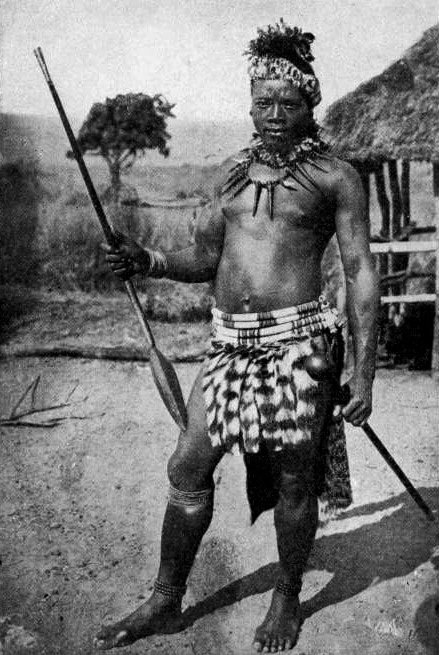iklwa on:
[Wikipedia]
[Google]
[Amazon]
An assegai or assagai is a

polearm
A polearm or pole weapon is a close combat weapon in which the main fighting part of the weapon is fitted to the end of a long shaft, typically of wood, extending the user's effective range and striking power. Polearms are predominantly melee we ...
used for throwing, usually a light spear
A spear is a polearm consisting of a shaft, usually of wood, with a pointed head. The head may be simply the sharpened end of the shaft itself, as is the case with Fire hardening, fire hardened spears, or it may be made of a more durable materia ...
or javelin
A javelin is a light spear designed primarily to be thrown, historically as a ranged weapon. Today, the javelin is predominantly used for sporting purposes such as the javelin throw. The javelin is nearly always thrown by hand, unlike the sling ...
made up of a wooden handle
A handle is a part of, or an attachment to, an object that allows it to be grasped and object manipulation, manipulated by hand. The design of each type of handle involves substantial ergonomics, ergonomic issues, even where these are dealt wi ...
with an iron tip.
Area of use
The use of various types of the assegai was widespread all over Africa and it was the most common weapon used before the introduction of firearms. The Zulu, Xhosa, and other Nguni tribes of South Africa were renowned for their use of the assegai.''Iklwa''

Shaka
Shaka kaSenzangakhona (–24 September 1828), also known as Shaka (the) Zulu () and Sigidi kaSenzangakhona, was the king of the Zulu Kingdom from 1816 to 1828. One of the most influential monarchs of the Zulu, he ordered wide-reaching reform ...
of the Zulu popularized the use of the shorter stabbing spear with a shaft and a larger, broader blade long in warfare, which was traditionally used primarily as a hunting spear. This weapon is otherwise known as the ''iklwa'' or ''ixwa'', after the sound that was heard as it was withdrawn from the victim's wound. The traditional spear was not abandoned, but was thrown from range at enemy formations before closing in for close quarters battle with the iklwa. This tactical combination originated during Shaka's military reforms. This weapon was typically used with one hand while the off-hand held a cowhide
Cowhide is the natural, unbleached skin and hair of a cow. It retains the original coloring of the animal. Cowhides are a product of the food industry from cattle. Cowhide is frequently processed into leather.
Process
Once a cow has been killed, ...
shield
A shield is a piece of personal armour held in the hand, which may or may not be strapped to the wrist or forearm. Shields are used to intercept specific attacks, whether from close-ranged weaponry like spears or long ranged projectiles suc ...
for protection.
Botany
It is also the name of a southern African tree ( ''Curtisia dentata'') whose wood was suitable for making spears or lances, most notably by the Bantu-speaking people of southern Africa.See also
* Soliferrum * Rarabe kaPhalo * Falarica *Pilum
The ''pilum'' (; : ''pila'') was a javelin commonly used by the Roman army in ancient times. It was generally about long overall, consisting of an iron shank about in diameter and long with a pyramidal head, attached to a wooden shaft by eith ...
* Battle of Amalinde
*Almogavars
Almogavars (; ; ; ; originally ) is the name of a class of light infantry soldier originated in the Crown of Aragon used in the later phases of the Reconquista, during the 13th and 14th centuries.
Almogavars were lightly clad, quick-moving fr ...
* Shaka's military reforms
* Assegai Tree, ''Curtisia dentata''
Notes
References
External links
* {{Hunting topics Throwing spears Javelins African weapons